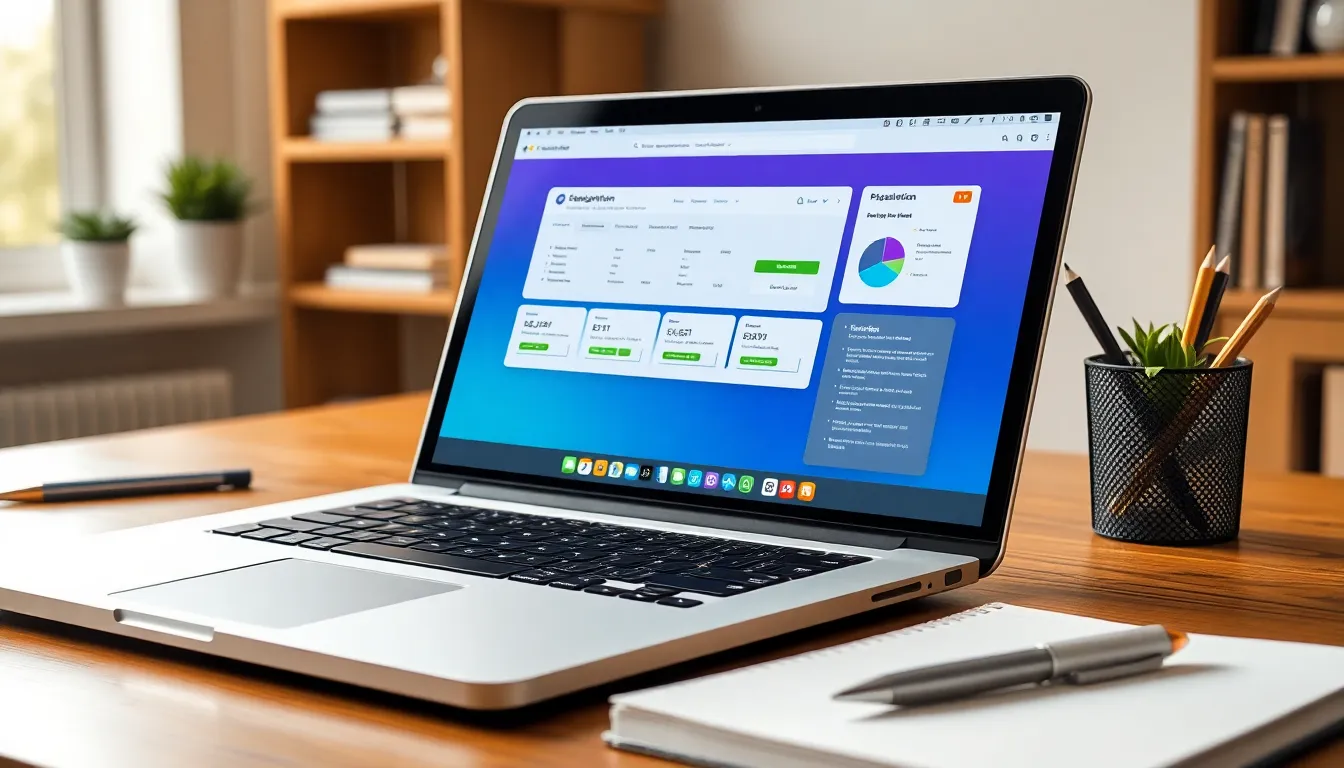In a world where originality is king, plagiarism detection software swoops in like a superhero armed with algorithms. It’s the trusty sidekick every writer needs to ensure their work stays as unique as a snowflake in a blizzard. With just a click, it scans the vast universe of text, hunting down those sneaky similarities that could land anyone in hot water.
Table of Contents
ToggleOverview of Plagiarism Detection Software
Plagiarism detection software serves as an essential resource for writers and educators alike. This technology analyzes written content and identifies similarities with existing texts in its database. Various types of software utilize sophisticated algorithms to ensure effective detection of copied material.
Most plagiarism detection tools provide real-time analysis. Users can submit documents and receive instant reports highlighting potential plagiarism issues. These reports often include links to the original sources, making it easier for users to address any detected similarities.
Different software options cater to diverse user needs. Some tools focus on academic writing, while others target content creators or businesses. Popular software includes Turnitin, Grammarly, and Copyscape, each offering unique features and benefits.
Integration with other platforms enhances usability. Many plagiarism detection tools offer plugins for writing applications, enabling seamless checks during the writing process. This integration helps writers maintain originality from the outset.
Pricing models vary among different software services. Some programs operate on a subscription basis, while others provide pay-per-use options. Free versions often deliver basic functionalities, though premium versions unlock comprehensive tools for thorough plagiarism checks.
Overall, plagiarism detection software plays a crucial role in upholding the integrity of written content. Its ability to compare texts against extensive databases allows users to protect their work and maintain academic honesty. Understanding how to effectively utilize these tools empowers writers to create authentic content.
Key Features to Consider

When selecting plagiarism detection software, several key features enhance functionality and user experience.
User Interface and Experience
A user-friendly interface simplifies the navigation process, making it easy for writers to perform checks. Streamlined layouts often include clear instructions and accessible menus. Many software options offer dashboards that display results in a visually appealing manner. Intuitive controls reduce the learning curve, allowing users to focus on writing rather than the software itself. Immediate feedback on text items provides quick insights into potential issues.
Detection Algorithms
Detection algorithms play a crucial role in identifying copied content. Advanced algorithms analyze writing against extensive databases, ensuring thorough checks. They often utilize contextual analysis to discern paraphrased material. These algorithms can differentiate between common phrases and genuine plagiarism, reducing false positives. Regular updates to the databases enhance performance, keeping pace with new content across the web.
Integrations and Compatibility
Integration capabilities significantly impact usability. Many tools sync seamlessly with popular writing platforms, enabling users to check for plagiarism without leaving their workflow. Compatibility with different file formats ensures flexibility, supporting documents like PDFs, Word files, and Google Docs. API access further enhances customizability for businesses that require tailored solutions. Support for multiple devices allows users to run checks on laptops, tablets, and smartphones.
Top Plagiarism Detection Software
Several plagiarism detection software options stand out in their effectiveness and unique features. Each caters to specific user needs, offering tools for educational, professional, and content creation purposes.
Software A
Turnitin serves as a leading tool in academic environments. Educators frequently use it to ensure student papers reflect original thought. This software compares submissions against vast databases, including student papers and scholarly articles, providing a detailed similarity report. Additionally, Turnitin offers integration with learning management systems. That feature enhances usability in educational settings, allowing for easier access during the assignment review process.
Software B
Grammarly, known primarily for its writing assistance, includes plagiarism detection in its premium version. Writers benefit from instant feedback on grammar and style, while also checking for originality. By scanning billions of web pages, Grammarly identifies potential sources of copied content. The user-friendly interface simplifies the writing process by seamlessly incorporating both plagiarism checks and editing suggestions. This integration serves writers across various fields, from academics to business.
Software C
Copyscape focuses on online content, making it popular among web publishers and bloggers. This tool efficiently detects duplicate content across the internet. Users can enter a URL or text to see where similar content exists online. Copyscape also provides a premium service that identifies copied material with greater accuracy. By offering pay-per-use options, it accommodates varying budgets, ensuring accessibility for users needing frequent plagiarism checks.
Benefits of Using Plagiarism Detection Software
Plagiarism detection software offers several advantages for users. This technology supports writers and educators in maintaining originality and credibility.
Academic Integrity
Academic integrity relies heavily on proper citation and originality. Plagiarism detection software assists educators in promoting honest scholarship. It helps students identify areas needing improvement in their writing. Many institutions mandate its use to uphold academic standards. Turnitin, for instance, provides comprehensive reports detailing similarities in text. Accurate assessments of originality ensure students submit authentic work.
Time-Saving
Time-saving benefits are significant with plagiarism detection software. Quick analysis of documents allows for rapid feedback on potential issues. Real-time reporting streamlines the editing process. Authors save hours that would otherwise be spent on manual checks. Many tools provide instant results, highlighting problematic areas immediately.
Improved Writing Skills
Improved writing skills are achievable with consistent use of plagiarism detection software. Users receive detailed insights into their writing practices. Frequent feedback encourages students to understand proper citation and paraphrasing techniques. Enhanced writing becomes a natural result of using these tools. Over time, writers develop a stronger sense of originality, reducing unintentional plagiarism.
Plagiarism detection software is an indispensable ally for anyone involved in writing. By leveraging advanced algorithms and extensive databases, these tools help maintain originality and academic integrity. Users can quickly identify potential issues and receive actionable feedback, enhancing their writing skills over time.
With various options available tailored to different needs, selecting the right software can significantly impact the quality of written content. Whether for academic purposes or content creation, employing these tools not only safeguards against plagiarism but also fosters a culture of authenticity and proper citation practices. Ultimately, integrating plagiarism detection into the writing process empowers creators to produce original work confidently.








